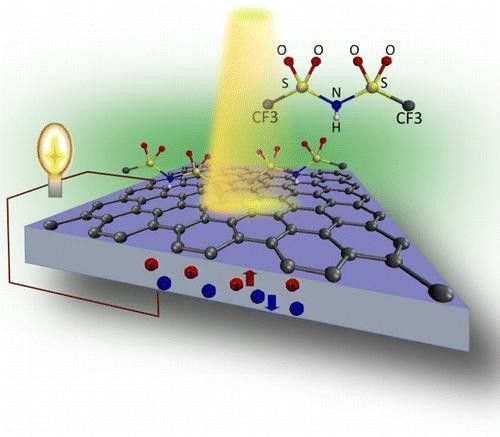Graphene has emerged as a paragon of modern material science, captivating researchers and engineers alike with its extraordinary strength and versatility. Often described as a ‘wonder material’, it is emblematic of the potential hidden within single-atom-thick layers of carbon. To fathom why graphene exhibits such remarkable mechanical properties, one must delve into its atomic structure, electron dynamics, and the unique bonding characteristics that differentiate it from conventional materials.
The foundational strength of graphene can be attributed to its unique two-dimensional lattice structure, where carbon atoms are arranged in a hexagonal honeycomb pattern. This arrangement allows each carbon atom to covalently bond with three neighbors, forming an extensive network of σ (sigma) bonds. These bonds are incredibly strong, necessitating significant energy to break. In fact, graphene boasts a tensile strength of approximately 130 gigapascals, making it one of the strongest materials ever tested, even exceeding that of steel by a factor of more than 100.
To appreciate this strength on a macro scale, one might envision graphene as a sheet of intertwined bicycle chains, where the interlocking mechanisms impart resilience and flexibility. Just as the chains carry the weight of the rider while allowing for graceful movement, graphene maintains its integrity under external forces, bending and flexing without yielding to fractures. This pliability alongside its robustness is a key feature that renders graphene suitable for a myriad of applications, from aerospace engineering to nanotechnology.
Moreover, the mechanical properties of graphene do not exist in isolation; they arise from a symbiotic relationship between its chemical makeup and physical qualities. Quantum mechanics plays a critical role in this synergy, governing the interactions between electrons in graphene. The presence of delocalized pi (π) electrons within the honeycomb structure amplifies its mechanical strength. These electrons contribute to what is known as ‘electronic band structure’, enabling graphene to sustain an immense amount of stress before reaching its yield point.
Further dissecting the microscopic properties of graphene reveals its exceptional fracture toughness. Unlike most materials that may exhibit catastrophic failures when subjected to excessive strain, graphene can endure significant deformation, thanks to its ability to distribute stress across its two-dimensional matrix. When a force is applied, the interconnected lattice allows the strain to be shared among adjacent bonds, thereby preventing localized weakening. This characteristic illustrates an important principle in material science: the efficacy of design at the atomic level can substantially influence overall performance.
Atomic Scale Interactions and Strength
The robustness of graphene is also enhanced by its exceptional atomic-scale interactions. The strong sp2 hybridization that occurs in the bonding of carbon atoms affords graphene additional stability. This effective bonding makes graphene resilient not only to tensile forces but also to environmental factors such as thermal fluctuations and oxidation. Consequently, researchers have speculated on graphene’s potential as a protective coating against wear and corrosion, further solidifying its iconic status in future technologies.
In addition to mechanical properties, the ethereal nature of graphene includes a remarkable stiffness, characterized by a high Young’s modulus, which offers insight into its elastic behavior. For context, Young’s modulus is defined as the ratio of tensile stress to tensile strain in a material and is indicative of how much a material will deform under stress. Graphene’s Young’s modulus exceeds that of most engineering materials, rendering it incredibly effective in applications that demand lightweight yet resilient components—such as in the development of advanced composites and electronic devices.
Applications and Potential
The unparalleled strength of graphene elevates its importance across diverse fields. In the realm of electronics, its strength combined with remarkable electrical conductivity is propelling innovations in flexible electronics and high-performance transistors. In biomedicine, graphene’s unique properties facilitate drug delivery systems that can withstand physiological stresses while providing targeted therapeutic responses. These multidimensional applications exemplify how the strength of graphene is not merely a physical attribute but a catalyst for diversification in technological advancements.
In the construction and materials engineering sectors, graphene-reinforced composites promise to revolutionize traditional building materials. These composites can deliver enhanced mechanical performance without significantly adding to the weight, creating structures that are stronger, lighter, and more efficient. The hypothetical envisioning of skyscrapers constructed with graphene-infused materials suggests a future where the laws of architecture could be redefined.
As research initiatives continue to explore the boundaries of graphene, the compound’s structural marvel will likely unveil further secrets. Interestingly, the concept of strength in materials science transcends mere resistance to physical forces; it encapsulates durability, functionality, and overall efficacy in real-world applications. Graphene symbolizes this multifaceted notion of strength, standing at the intersection of resilience and innovation.
Conclusion
What makes graphene so strong is not a singular property, but an intricate tapestry woven from atomic interactions, structural design, and the enchanting principles of quantum mechanics. Every attribute—from its remarkable tensile strength to its extraordinary flexibility and thermal stability—converges to form a material that is nothing short of revolutionary. The strength of graphene is not solely physical; it embodies the promise of a new era in material science, inspiring endless possibilities for industries seeking to push the limits of what is attainable. As we continue to unravel the complexities of this ‘wonder material’, one can only imagine the heights to which our engineered aspirations might ascend.












